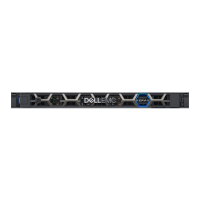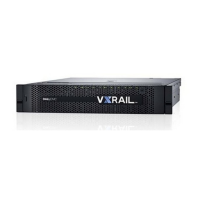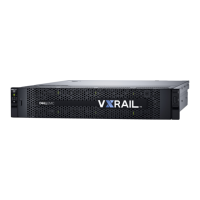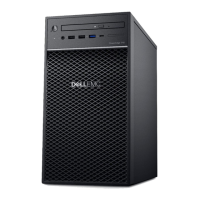13 | Network Planning Guide
© 2018 Dell Inc. or its subsidiaries
o VxRail nodes with SFP+ ports require optics modules (transceivers) and optical cables, or Twinax Direct-Attach-
Copper (DAC) cables. These cables and optics are not included; you must supply your own. The NIC and switch
connectors and cables must be on the same wavelength.
Step 4.
Determine the number of additional ports and port speed on the switch(es) for the uplinks to your core network
infrastructure to meet VxRail workload requirements. Select a switch or switches that provide sufficient port
capacity and characteristics.
Step 5.
Reserve one additional port on the switch for a workstation/laptop to access the VxRail management interface for
the cluster
o The additional port for access to the management interface is removed if connectivity is available elsewhere on
the logical path on the VxRail management VLAN
Step 6.
Select a switch or switches that support the features and functionality required for VxRail
o IPV6 multicast is a requirement for VxRail device discovery
o If you want VxRail to be the source for the automated configuration of the top-of-rack switches, be sure to select
a supported Dell switch model and license
Step 7.
Determine whether a single switch will meet business ojectives, as it is a potential single point of failure. Dual
top-of-rack (ToR) switches provide protection from a switch failure.
o If you are deploying dual top-of-rack switches, it is best practice to reserve ports on each switch for inter-switch
links
Step 8.
Decide whether to deploy a separate switch to support connectivity to the VxRail management port on each node
o Dell iDRAC supports 1GbE connectivity. You can choose to deploy a dedicated 1GbE switch for this purpose.
You can also use open ports on the top-of-rack switches unless you elect to have VxRail to be the source for the
automated configuration for the top-of-rack switches.
Planning the VxRail Implementation
VxRail is an entire software-defined data center in an appliance form factor. All administrative activities, including initial
implementation and initialization, configuration, capacity expansion, online upgrades, and maintenance and support are handled
within the VxRail management system. When the VxRail appliance is installed in your data center, connected to your network, and
the physical components powered on, the VxRail management system will automate the full implementation of the final software-
defined data center based on your settings and input.
Before getting to this phase, several planning and preparation steps need to be undertaken to ensure a seamless integration of the
final product into your data center environment. These planning and preparation steps include:
1. Decide on VxRail Single Point of Management
2. Plan the VxRail logical network
3. Identify IP address range for VxRail logical networks
4. Identify unique hostnames for VxRail management components
5. Identify external applications and settings for VxRail
6. Create DNS records for VxRail management components
7. Prepare Customer-Supplied vCenter Server
8. Reserve IP addresses for VxRail vMotion and vSAN networks
9. Decide on VxRail Logging Solution
10. Decide on passwords for VxRail management

